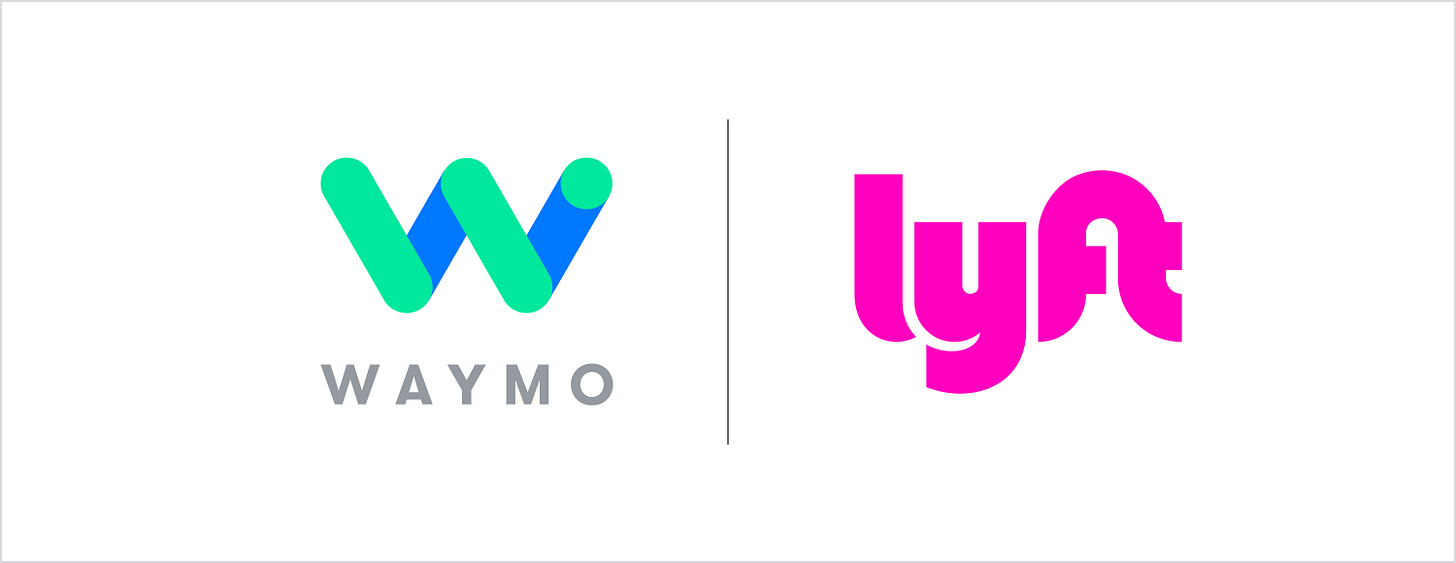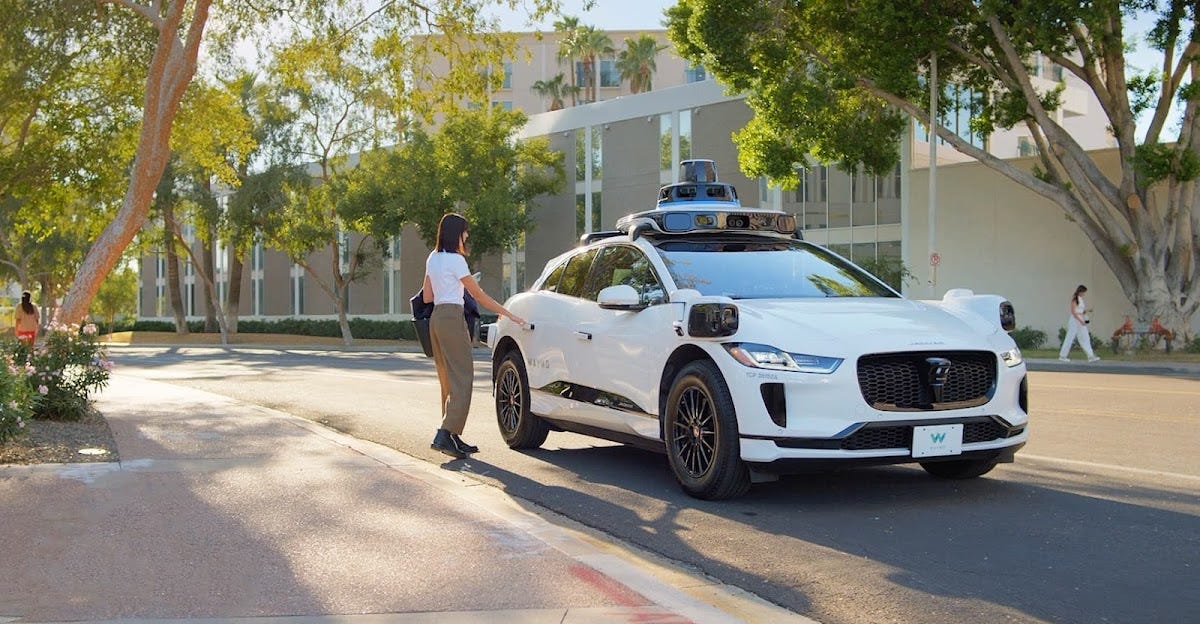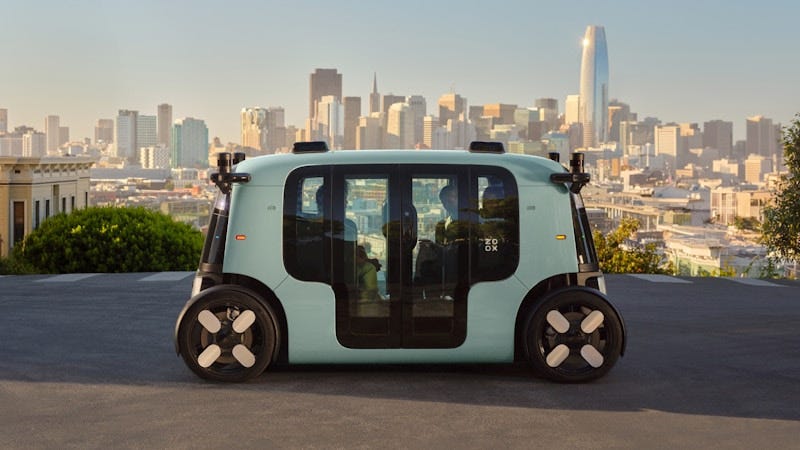Is Lyft About to Become the Biggest AV Winner?
Wall Street wrote off Lyft as a dying value stock; autonomous vehicles could turn it into a growth story overnight.
What does Lyft do
Lyft is a U.S.-based ride-hailing company. Through its app, customers can book rides from drivers, and Lyft also provides insurance coverage for both drivers and passengers on those trips.
Their main customers are everyday people looking for quick, convenient transportation; commuters, travelers, and anyone who doesn’t want to drive themselves. Lyft makes money by taking a share of each ride fare.
In recent years, Lyft has seen steady growth in ride volumes and revenue, though it is still much smaller than Uber, which operates on a global scale.
Lyft’s valuation has stayed very depressed over the past few years. The main reasons are the lack of profitability and, more recently, fears that autonomous vehicle players like Tesla and Waymo might bypass Uber and Lyft completely by running their own apps. But I think there’s a much more bullish story starting to build underneath.
The partnership that changed it all
On September 17, 2025, Lyft and Waymo announced a new AV partnership. Waymo is one of the clear leaders in autonomous driving and will likely be a major player in the AV race. That’s why I think this deal could be a real tipping point for Lyft.
Why AV matters
So why do I think AV has so much opportunity? It’s simple. AV removes the labor cost from transportation. Every car essentially comes with a built-in driver. That completely transforms the value proposition of cars.
The cost of transportation will fall drastically. The shift could be so big that prices drop by an order of magnitude. In practice, that means instead of paying $20 to get from point A to point B in the city, you might end up paying only $2–3 in the future.
Here’s how I think much cheaper prices will reshape society. First, the availability and convenience of robotaxis will make most car ownership unnecessary. Instead of buying a car, people will just order one when they need it.
But that’s only the start. Once we reach unsupervised AV, people will realize they don’t really mind longer commutes. Slowly, people will start moving even further away from city centers. After all, if you only have to pay $10 for a 1–2 hour commute and can sit comfortably working while the car drives itself, wouldn’t it make sense? On the flip side, you could own a house twice the size for the same money.
The result
The end product of these changes could look something like this in the U.S. You have roughly 300 million people who could commute daily. Multiply that by, say, $10 per ride, and you already get $3 billion. Multiply again by the number of days in a year and you end up with a figure close to a trillion.
Right now, the ride-hailing market is only around $60 billion. The potential increase would be massive.
Then comes the difficult part: who will actually capture all this value? In the short term, I think the first AV players themselves will see massive value creation/capture. But over time, companies like Uber and Lyft should benefit hugely from the growth in robotaxi rides.
Right now, Lyft’s revenue is somewhere around $6 billion. That’s a pretty small share of the overall ride-hailing market. But the latest partnership with Waymo shines a light on a future where Lyft could see much more growth. Even capturing a small slice of the AV robotaxi revenue pool could have a massive impact on a company as small as Lyft.
Counter arguments
The story doesn’t come without risk. One concern is that if a player like Tesla becomes too dominant, they could just use their own app, and then no one really cares about Lyft. I think this risk is real, but somewhat small. There’s so much money flowing into R&D that we already have multiple players with decent AV tech. Over time, talent from these companies will spin out into new startups, and that should make AV more commoditized at some point.
Yes, training data does create a moat, but I have a hard time seeing odds above 50% that we end up in a world where Lyft has no place in the ecosystem. And 50% odds is all that’s needed for this story to have a positive expected value.
On top of that, the deal announced between Waymo and Lyft already de-risks this concentration concern in my view. It shows that AV leaders are willing to partner with Lyft rather than shut them out completely.
Another interesting argument is why Waymo would even partner with Lyft when Uber is so much bigger. This point goes both ways. On the one hand, Uber probably is the stronger partner with more reach. But at the same time, AV providers have an incentive to work with multiple players. That way they keep competition alive and make sure they get the best price.
If they give too much power to Uber, they risk hurting themselves long term. So you could argue that Lyft being the smaller player might actually work as an advantage.
The best argument against all of this, in my opinion, is that Lyft doesn’t really bring much to the table. With human drivers, they coordinate supply and demand and create a functioning marketplace. But with autonomous vehicles, their role could shrink to just being an app that connects people.
If that ends up being the case, then the question becomes: what kind of margins can this model actually support? The answer might be very low.
Final take
All in all, I think the recent deal with Waymo substantially de-risks the story. It now seems much more likely that Lyft will be part of the massive AV future. There are, of course, still questions about margins, but if revenue grows enough, I have a hard time seeing how someone wouldn’t be willing to pay up for that.
Disclaimer
This post reflects my personal views and trades only. It is not financial advice. Please do your own research before making any investment decisions.




